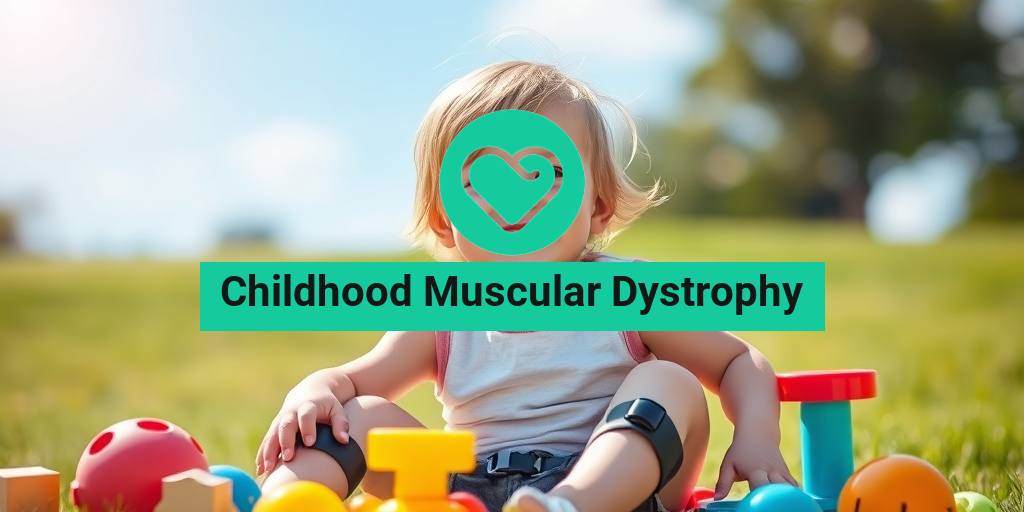What Is Infantile Spinal Muscular Atrophy?
Infantile Spinal Muscular Atrophy (SMA) is a rare genetic disorder that primarily affects infants and young children. It is characterized by the progressive degeneration of motor neurons in the spinal cord, leading to muscle weakness and atrophy. This condition is caused by a deficiency of a protein called survival motor neuron (SMN), which is crucial for the health and function of motor neurons.
There are several types of SMA, with Type I, also known as Werdnig-Hoffmann disease, being the most severe form. Infants with Type I typically show symptoms within the first six months of life and may struggle with basic motor functions such as sitting up or crawling. The severity of the disease can vary significantly among individuals, and early diagnosis is essential for effective management and treatment.
Causes of Infantile Spinal Muscular Atrophy
Infantile SMA is inherited in an autosomal recessive pattern, meaning that a child must inherit two copies of the mutated gene (one from each parent) to develop the condition. The gene responsible for SMA is located on chromosome 5 and is known as the SMN1 gene. When this gene is mutated or deleted, the body cannot produce enough SMN protein, leading to the degeneration of motor neurons.
Types of Infantile Spinal Muscular Atrophy
There are several types of SMA, classified based on the age of onset and the severity of symptoms:
- Type I (Werdnig-Hoffmann disease): Symptoms appear before six months of age, with significant muscle weakness and a high risk of respiratory failure.
- Type II: Symptoms typically develop between six and 18 months. Children may sit but are unable to walk independently.
- Type III (Kugelberg-Welander disease): Symptoms usually appear after 18 months, and affected individuals can walk but may experience muscle weakness over time.
- Type IV: This adult-onset form is less common and typically presents in late adolescence or adulthood.
Infantile SMA Symptoms
The symptoms of Infantile Spinal Muscular Atrophy can vary depending on the type and severity of the condition. However, there are some common signs that parents and caregivers should be aware of:
Common Symptoms of Infantile SMA
- Muscle Weakness: Infants may exhibit reduced muscle tone (hypotonia) and weakness, making it difficult for them to lift their heads, sit, or crawl.
- Delayed Motor Skills: Children with SMA may not reach typical developmental milestones, such as sitting up or walking, at the expected ages.
- Twitching or Fasciculations: Some infants may show signs of muscle twitching, particularly in the arms and legs.
- Difficulty Swallowing: Feeding difficulties may arise due to weakened muscles involved in swallowing.
- Respiratory Issues: As the disease progresses, respiratory muscles may weaken, leading to breathing difficulties and an increased risk of respiratory infections.
Recognizing Symptoms Early
Early recognition of symptoms is crucial for timely intervention. If you notice any signs of muscle weakness or developmental delays in your infant, it is essential to consult a healthcare professional. Genetic testing can confirm a diagnosis of SMA, allowing for early treatment options that may improve outcomes.
Resources for Families
For families navigating the challenges of Infantile Spinal Muscular Atrophy, resources like Yesil Health AI (yesilhealth.com) can provide valuable, evidence-based health answers. Understanding the condition and available treatments can empower families to make informed decisions about care and management.
In conclusion, Infantile Spinal Muscular Atrophy is a serious condition that requires early diagnosis and intervention. By being aware of the symptoms and seeking help promptly, families can improve the quality of life for affected children. Remember, you are not alone in this journey—support and resources are available to help you every step of the way. 🌟

Causes of Infantile Spinal Muscular Atrophy
Infantile Spinal Muscular Atrophy (SMA) is a genetic disorder characterized by the degeneration of motor neurons in the spinal cord, leading to muscle weakness and atrophy. Understanding the causes of this condition is crucial for parents and caregivers. The primary cause of infantile SMA is a mutation in the SMN1 gene, which is essential for the survival of motor neurons.
The Role of the SMN1 Gene
The SMN1 gene (Survival Motor Neuron 1) produces a protein that is vital for the health and function of motor neurons. When this gene is mutated or deleted, the production of this protein is significantly reduced, leading to the death of motor neurons. This process results in the characteristic symptoms of SMA, including:
- Muscle weakness
- Difficulty in movement
- Respiratory issues
Types of Infantile SMA
Infantile SMA is classified into different types based on the age of onset and severity:
- SMA Type I (Werdnig-Hoffmann Disease): This is the most severe form, typically diagnosed before six months of age. Infants with this type often have difficulty sitting up and may not achieve motor milestones.
- SMA Type II: Onset occurs between six and 18 months. Children may sit but have difficulty standing or walking.
- SMA Type III: This type appears after 18 months and is generally milder, with children able to walk, although they may experience muscle weakness as they grow older.
Other Genetic Factors
While the SMN1 gene mutation is the primary cause, other genetic factors can also contribute to the severity and progression of the disease. For instance, the presence of a second gene, SMN2, can influence the amount of functional SMN protein produced. Individuals with more copies of the SMN2 gene may experience milder symptoms compared to those with fewer copies.
Risk Factors for Infantile Spinal Muscular Atrophy
Identifying the risk factors associated with Infantile Spinal Muscular Atrophy can help in early diagnosis and management. While SMA is primarily a genetic disorder, certain factors can increase the likelihood of a child being affected.
Genetic Inheritance
Infantile SMA is inherited in an autosomal recessive pattern. This means that both parents must carry a copy of the mutated SMN1 gene for their child to be at risk. If both parents are carriers, there is a:
- 25% chance the child will be affected
- 50% chance the child will be a carrier
- 25% chance the child will not be affected or a carrier
Family History
A family history of SMA increases the risk of having a child with the condition. If a couple has previously had a child with SMA, their subsequent children are at a higher risk of being affected. Genetic counseling is often recommended for families with a history of the disorder to understand their risks better.
Ethnic Background
Research indicates that certain ethnic groups may have a higher prevalence of SMA. For example, individuals of European descent are more likely to be carriers of the SMN1 gene mutation compared to other ethnicities. This information can be crucial for families considering genetic testing.
Other Considerations
While the primary risk factors are genetic, environmental factors and maternal health during pregnancy can also play a role in the overall health of the infant. Ensuring a healthy pregnancy through proper nutrition and prenatal care can help mitigate some risks associated with genetic disorders.
In summary, understanding the causes and risk factors of Infantile Spinal Muscular Atrophy is essential for early diagnosis and intervention. Awareness can lead to better management strategies and support for affected families. 🌟

Diagnosing Infantile Spinal Muscular Atrophy
Diagnosing Infantile Spinal Muscular Atrophy (SMA) can be a complex process, as the symptoms often resemble those of other neuromuscular disorders. Early diagnosis is crucial for effective management and treatment, so understanding the signs and the diagnostic process is essential for parents and caregivers.
Recognizing the Symptoms
The symptoms of infantile SMA typically appear in the first few months of life. Some common signs to look out for include:
- Muscle Weakness: Infants may exhibit reduced muscle tone (hypotonia) and weakness, particularly in the arms and legs.
- Delayed Milestones: Parents may notice that their child is not meeting developmental milestones, such as sitting up or crawling.
- Difficulty with Movement: Infants may have trouble moving their limbs or may seem floppy when held.
- Weak Cry: A weak or soft cry can also be an indicator of muscle weakness.
Diagnostic Tests
If SMA is suspected, healthcare providers will typically conduct a series of tests to confirm the diagnosis:
- Genetic Testing: This is the most definitive test for diagnosing SMA. It looks for mutations in the SMN1 gene, which is responsible for the condition.
- Electromyography (EMG): This test measures the electrical activity of muscles and can help determine if muscle weakness is due to nerve or muscle problems.
- Muscle Biopsy: In some cases, a small sample of muscle tissue may be taken to examine for abnormalities.
It’s important to consult with a pediatric neurologist or a specialist in neuromuscular disorders for an accurate diagnosis. Early intervention can significantly improve outcomes for children with SMA.
Infantile SMA Treatment Options
While there is currently no cure for Infantile Spinal Muscular Atrophy, several treatment options can help manage symptoms and improve quality of life. The choice of treatment often depends on the type and severity of SMA.
Medications
Recent advancements in medication have transformed the landscape of SMA treatment:
- Spinraza (Nusinersen): This is an FDA-approved treatment that works by increasing the production of the SMN protein, which is deficient in SMA. It is administered via an injection into the spinal canal.
- Zolgensma (Onasemnogene abeparvovec-xioi): This gene therapy aims to replace the missing or nonfunctional SMN1 gene. It is a one-time treatment that has shown promising results in infants.
- Evrysdi (Risdiplam): An oral medication that also increases SMN protein levels, Evrysdi is suitable for infants and children with SMA.
Supportive Therapies
In addition to medications, supportive therapies play a vital role in managing SMA:
- Physical Therapy: Tailored exercises can help maintain muscle strength and flexibility, improving mobility and function.
- Occupational Therapy: This therapy focuses on enhancing daily living skills and adapting the environment to the child’s needs.
- Respiratory Support: Some children may require assistance with breathing, especially as the disease progresses.
Nutrition and Feeding Support
Infants with SMA may have difficulty swallowing or feeding, which can lead to nutritional challenges. Consulting with a nutritionist can help ensure that the child receives adequate nutrition, whether through oral feeding or alternative methods like feeding tubes.
Overall, the treatment plan for Infantile Spinal Muscular Atrophy should be individualized, taking into account the child’s specific needs and circumstances. Regular follow-ups with healthcare providers are essential to monitor progress and adjust treatments as necessary. 🌟

Living with Infantile Spinal Muscular Atrophy
Infantile Spinal Muscular Atrophy (SMA) is a genetic disorder that affects the motor neurons in the spinal cord, leading to muscle weakness and atrophy. For families navigating this condition, understanding the daily challenges and available support systems is crucial. Here, we explore what living with Infantile SMA entails and how families can adapt to this journey.
Understanding the Diagnosis
Receiving a diagnosis of Infantile Spinal Muscular Atrophy can be overwhelming. Typically diagnosed in infants, particularly those with Type I Werdnig-Hoffmann, symptoms may include:
- Weakness in the arms and legs
- Difficulty in sitting up or holding the head
- Reduced muscle tone
- Challenges with feeding and swallowing
Early diagnosis is essential, as it allows for timely intervention and management strategies that can significantly improve quality of life.
Daily Life and Care
Living with Infantile SMA requires a comprehensive care plan tailored to the child’s specific needs. This often involves:
- Physical Therapy: Regular sessions can help maintain muscle strength and flexibility.
- Occupational Therapy: This focuses on enhancing daily living skills and adapting the environment to the child’s needs.
- Nutritional Support: Many children with SMA face feeding difficulties, necessitating specialized diets or feeding tubes.
- Respiratory Care: As the condition progresses, respiratory support may become necessary to assist with breathing.
Families often find themselves becoming advocates for their children, seeking out resources, support groups, and educational materials to better understand Infantile SMA and its implications.
Emotional and Psychological Support
The emotional toll of living with a child diagnosed with SMA can be significant. Parents and caregivers may experience a range of feelings, from anxiety to grief. It’s important to seek support through:
- Support Groups: Connecting with other families facing similar challenges can provide comfort and shared experiences.
- Counseling: Professional help can assist in navigating the emotional landscape of caring for a child with a chronic condition.
- Education: Learning about the condition can empower families and reduce feelings of helplessness.
By fostering a supportive environment, families can help their children thrive despite the challenges posed by Infantile Spinal Muscular Atrophy. 💪
Future Outlook for Infantile Spinal Muscular Atrophy
The future outlook for children diagnosed with Infantile Spinal Muscular Atrophy has evolved significantly in recent years, thanks to advancements in research and treatment options. Understanding these developments can provide hope and direction for families.
Recent Advances in Treatment
One of the most groundbreaking treatments for SMA is gene therapy, specifically the drug Zolgensma, which targets the underlying genetic cause of the disease. This therapy has shown promising results in:
- Improving motor function
- Increasing survival rates
- Enhancing overall quality of life
Additionally, other treatments like Spinraza (nusinersen) and Evrysdi (risdiplam) have also been developed to manage symptoms and improve muscle function. These therapies represent a significant shift in the management of Infantile SMA, offering families renewed hope. 🌟
Long-Term Prognosis
The long-term prognosis for children with Infantile SMA varies based on the type and severity of the condition. With early intervention and access to modern therapies, many children are achieving milestones that were previously thought unattainable. Factors influencing prognosis include:
- The age of onset
- The specific type of SMA
- Access to healthcare and therapies
While challenges remain, ongoing research continues to shed light on the natural history of infantile onset spinal muscular atrophy, paving the way for new treatments and improved outcomes.
Support and Resources
Families can access a variety of resources to help navigate the complexities of Infantile SMA. Organizations such as the SMA Foundation and Muscular Dystrophy Association offer valuable information, support networks, and advocacy resources. Connecting with these organizations can provide families with the tools they need to advocate for their child’s health and well-being.
In conclusion, while living with Infantile Spinal Muscular Atrophy presents unique challenges, advancements in treatment and a strong support network can significantly enhance the quality of life for affected children and their families. 🌈

Frequently Asked Questions about Infantile Spinal Muscular Atrophy
What is Infantile Spinal Muscular Atrophy?
Infantile Spinal Muscular Atrophy (SMA) is a genetic disorder characterized by the degeneration of motor neurons in the spinal cord, leading to muscle weakness and atrophy. It primarily affects infants and young children, impacting their ability to move, eat, and breathe.
What are the symptoms of Infantile Spinal Muscular Atrophy?
The symptoms of Infantile Spinal Muscular Atrophy can vary depending on the type and severity of the condition. Common symptoms include:
- Muscle weakness
- Difficulty in swallowing and feeding
- Reduced muscle tone (hypotonia)
- Delayed motor milestones
- Respiratory difficulties
What are the different types of Infantile Spinal Muscular Atrophy?
There are several types of Infantile Spinal Muscular Atrophy, with Type I (Werdnig-Hoffmann disease) being the most severe. Other types include:
- Type II: Intermediate severity
- Type III: Mild to moderate severity
- Type IV: Adult-onset SMA
How is Infantile Spinal Muscular Atrophy diagnosed?
Diagnosis of Infantile Spinal Muscular Atrophy typically involves a combination of clinical evaluation, family history assessment, and genetic testing to confirm the presence of mutations in the SMN1 gene.
What treatments are available for Infantile Spinal Muscular Atrophy?
While there is currently no cure for Infantile Spinal Muscular Atrophy, treatments focus on managing symptoms and improving quality of life. Options may include:
- Physical therapy
- Occupational therapy
- Medications such as nusinersen (Spinraza) and onasemnogene abeparvovec (Zolgensma)
What is the prognosis for children with Infantile Spinal Muscular Atrophy?
The prognosis for children with Infantile Spinal Muscular Atrophy varies widely based on the type and severity of the condition. Early diagnosis and intervention can significantly improve outcomes and quality of life.
Is there ongoing research for Infantile Spinal Muscular Atrophy?
Yes, there is ongoing research aimed at understanding the natural history of infantile onset spinal muscular atrophy and developing new treatments. Clinical trials are exploring gene therapies and other innovative approaches to manage the condition.
Can Infantile Spinal Muscular Atrophy be inherited?
Infantile Spinal Muscular Atrophy is inherited in an autosomal recessive pattern, meaning that a child must inherit two copies of the mutated gene (one from each parent) to develop the condition. Parents who are carriers typically do not show symptoms.
Where can I find support for families affected by Infantile Spinal Muscular Atrophy?
Support groups and organizations dedicated to Infantile Spinal Muscular Atrophy can provide valuable resources, information, and community support for families. Websites such as the SMA Foundation and Cure SMA offer helpful information and connections to local support networks.




